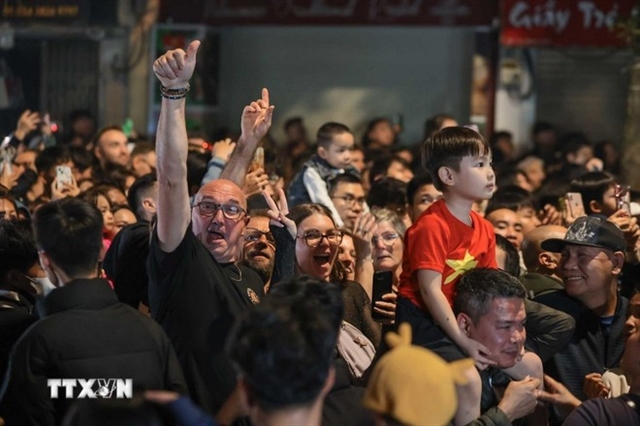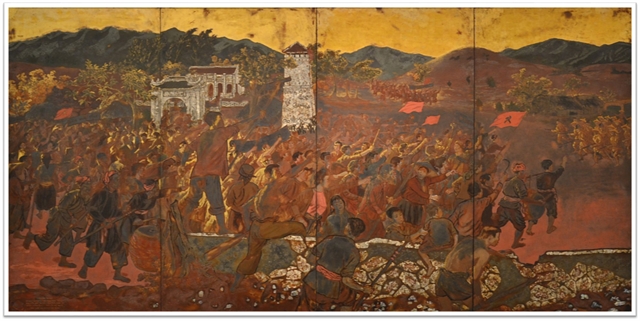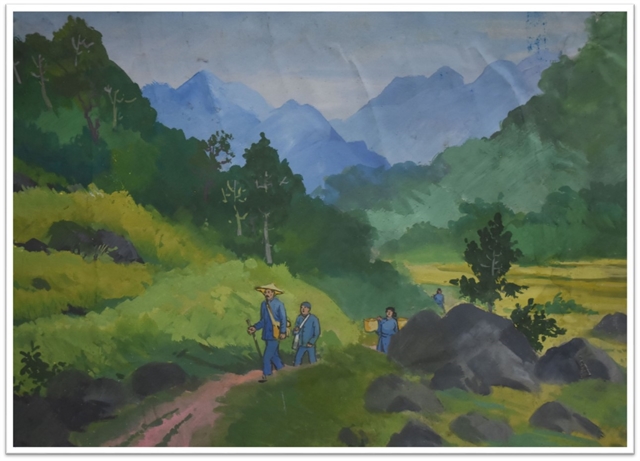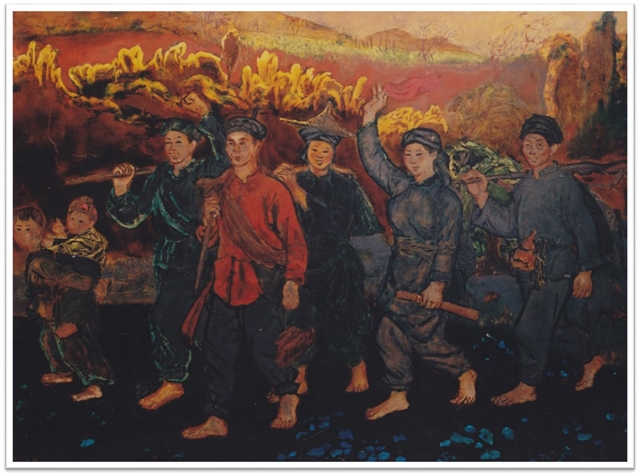 Life & Style
Life & Style

A collection of 18 paintings presenting the determination of Vietnamese people to fight for their nation’s independence has been presented in a new online exhibition of the Việt Nam National Fine Arts Museum.
HÀ NỘI — A collection of 18 paintings presenting the determination of Vietnamese people to fight for their nation’s independence has been presented in a new online exhibition of the Việt Nam National Fine Arts Museum.

|
| Bác Hồ Đọc Tuyên Ngôn (Uncle Hồ Reads the Declaration of Independence) by Nguyễn Dương, 1979, Colour powder. — Photos courtesy of Việt Nam National Fine Arts Museum |
Entitled Con Đường Độc Lập (Road to Independence), the event is an activity to celebrate the 76th anniversary of Việt Nam’s National Day (2 September 1945 - 2 September 2021). The exhibition, from an artistic point of view, has affirmed the significant historical value of the August Revolution as well as the great merits of President Hồ Chí Minh in the national fight for independence.
The paintings, created by 15 artists in different mediums such as oil on canvas, lacquer, silk, and woodblock, cover several historical milestones.

|
| The lacquer four-panel painting 'Soviet Nghệ Tĩnh Uprising' created in 1957 by a group of six artists. |
The Soviet Nghệ Tĩnh uprising – a series of uprisings, strikes and demonstrations in 1930 and 1931 by Vietnamese peasants, workers, and intellectuals in two central provinces of Nghệ An and Hà Tĩnh against the colonial French regime, the local mandarins and landlords –are depicted in a four-panel lacquer painting created in 1957. A group of six artists including Phạm Văn Đôn, Huỳnh Văn Thuận, Nguyễn Sỹ Ngọc, Nguyễn Đức Nùng, Trần Đình Thọ, Nguyễn Văn Tỵ completed the artwork.
The Bắc Sơn uprising of Vietnamese people against French and Japanese colonialists took place in Bắc Sơn, Lạng Sơn in 1940, the uprisings in Cochinchine [the Southern region during the control of the French colonialism] in 1940, and the public takeover of the Indochina Governor Generals Palace (nowadays the Presidential Palace) in 1945, are also told through the paintings.

|
| Mùa Xuân Bác Về Pắc Bó (Uncle Hồ Comes Back to Pắc Bó in Spring) by Dương Tuấn (1935-1990). Colour powder. |
The image of President Hồ when he reads the Declaration of Independence of the Democratic Republic of Việt Nam in public on Ba Đình Square on September 2, 1945, was recreated in a painting created by Nguyễn Dương in 1979.

|
| Du Kích Bắc Sơn Về Bản Pình (Bắc Sơn Guerillas Return to Pình Village) by Nguyễn Văn Tỵ (1917-1992), 1958. Lacquer. |
Another painting by Dương Tuấn, Mùa Xuân Bác về Pắc Bó (Uncle Hồ Comes Back to Pắc Bó in Spring) depicts the day when the President returned to Việt Nam (28 January 1941) after more than 30 years living abroad to find the way to liberate the country. Here, together with other members of the 1st Central Committee of the Communist Party of Việt Nam, he completed the revolutionary strategies for the national liberation, which led to the success of the August Revolution in 1945, at the same time the birth of the Democratic Republic of Việt Nam.
The painting collection is on display on https://vnfam.vn/. — VNS